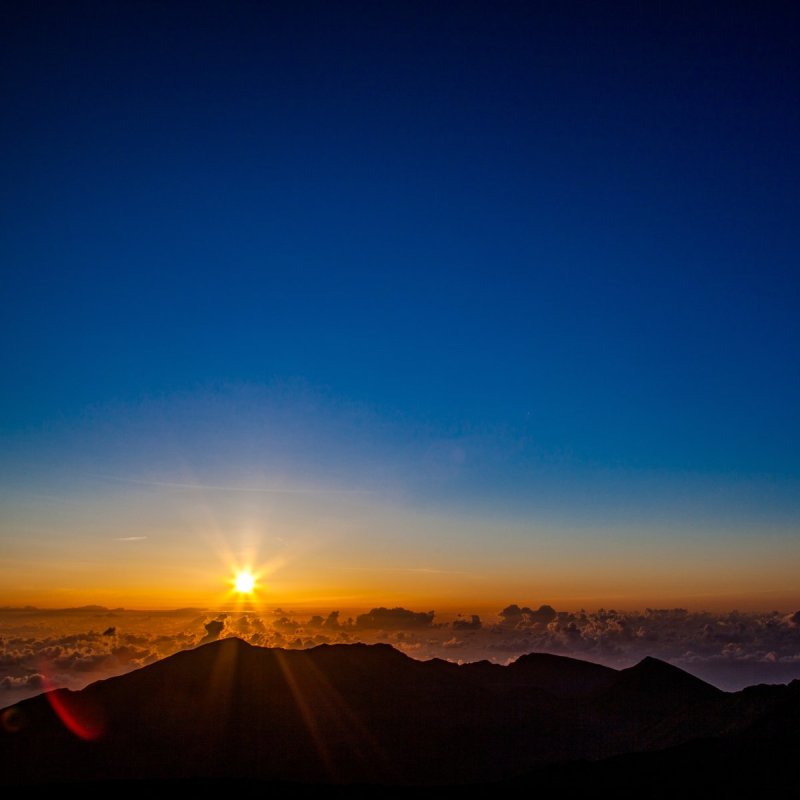
If you absolutely love to see a beautiful sunrise, here’s a trip you must add to your bucket list.
Videos by TravelAwaits
First, you’ll need to travel to the Hawaiian island of Maui. Then, around 3 a.m., make your way to Haleakala National Park, which is home to Haleakala — Maui’s highest peak. When the sun rises, the view is spectacular.
When Mark Twain saw the sunrise from that vantage point, he wrote in Roughing It, “There was little conversation, for the impressive scene overawed speech. I felt like the Last Man, neglected of the judgment, and left pinnacled in mid-heaven, a forgotten relic of a vanished world.”
The view is so breathtaking that the National Park Service had to institute a reservation system to limit crowd size and traffic congestion.

“House Of The Sun”
Haleakala National Park encompasses more than 30,000 acres, which can be divided into three areas, Hawaii Guide notes. One of the most popular is the volcanic, rocky area known as the Summit Area. The second most popular area, known as the Kipahulu Area, is home to green landscapes, waterfalls, and pools.
Haleakala Crater, which rises 10,023 feet above the Pacific Ocean, accounts for roughly three-quarters of Maui. On the way to its summit, visitors will travel through six of the world’s 14 climate zones.

How Haleakala Was Formed
Haleakala means “house of the sun,” and it’s where demigod Maui lassoed the sun, slowing its passage so people had more time to dry kapa (cloth) and grow food, the National Park Service explains.
Here’s how it was formed. Millions of years ago, the U.S. Geological Survey explains, the Pacific Plate drifted over a hotspot of super-heated rock that melted through the Earth’s crust and built shield volcanoes. Over time, the accumulation of lava created Haleakala.
Then, over eons, erosion from wind and rain created Haleakala’s unique shape. While its summit is commonly called Haleakala Crater, the volcano’s summit is actually an “erosional depression,” created when two valleys merged.
Controlled Access
Sunrise at Haleakala is truly magnificent. For example, in her article “A Day In Haleakala National Park, From Sunrise To Sunset,” Cindy Barks describes the sunrise this way: “The blue sky melds with the far-off coastline, contrasting beautifully with the red and black rock formations at the summit.”
With that in mind, it’s no surprise that sunrise at Haleakala draws 1.5 million visitors each year.
As the park grew in popularity, the National Park Service implemented the reservation system to manage crowds. Reservations, which are not available on site, cost around $1.50 per car. The maximum capacity is 150 cars. More information about the reservation system can be found here.
Know Before You Go
Haleakala National Park is open; however, face masks are required on federal lands where physical distancing cannot be maintained, as well as in buildings and facilities. Also, visitors must follow the Safe Travels Hawai’i pre-travel testing program.
Love looking up? Check out our stargazing category.
